1. Fennec Fox: The Adorable Survivor of the Sahara

The fennec fox might look like it belongs in a fairytale, with its enormous ears, fluffy tail, and expressive eyes, but this tiny predator is a true master of desert survival, according to Wikipedia. Living in the scorching Sahara Desert and parts of North Africa, it has developed some fascinating adaptations that help it endure temperatures that can exceed 120°F (49°C) during the day and plummet to near freezing at night. Its massive ears, which can grow up to six inches long, serve a crucial role beyond just making it look cute—they help release body heat, preventing the fox from overheating. These ears also provide exceptional hearing, allowing it to detect the faintest sounds of insects, rodents, and lizards moving beneath the sand. Since water is scarce in the desert, the fennec fox gets most of its nutrition from the food it eats, rarely needing to drink. Its thick, sand-colored fur reflects sunlight during the day, keeping it cool, and provides insulation against the cold desert nights. It also has furry paws that act like built-in snowshoes, protecting its feet from scorching sand while helping it move swiftly across loose dunes.
But perhaps the most impressive adaptation is its ability to dig deep burrows, which serve as natural air-conditioned shelters. These burrows, which can extend up to 10 feet underground, provide protection from predators and the relentless desert sun. Unlike many desert animals, fennec foxes are social creatures, living in small family groups and communicating through a variety of barks, whimpers, and even purring sounds. Despite the extreme conditions, these resilient foxes thrive in the desert’s unforgiving environment, proving that even the smallest predators can be incredibly tough.
2. Camel: The Ultimate Desert Nomad
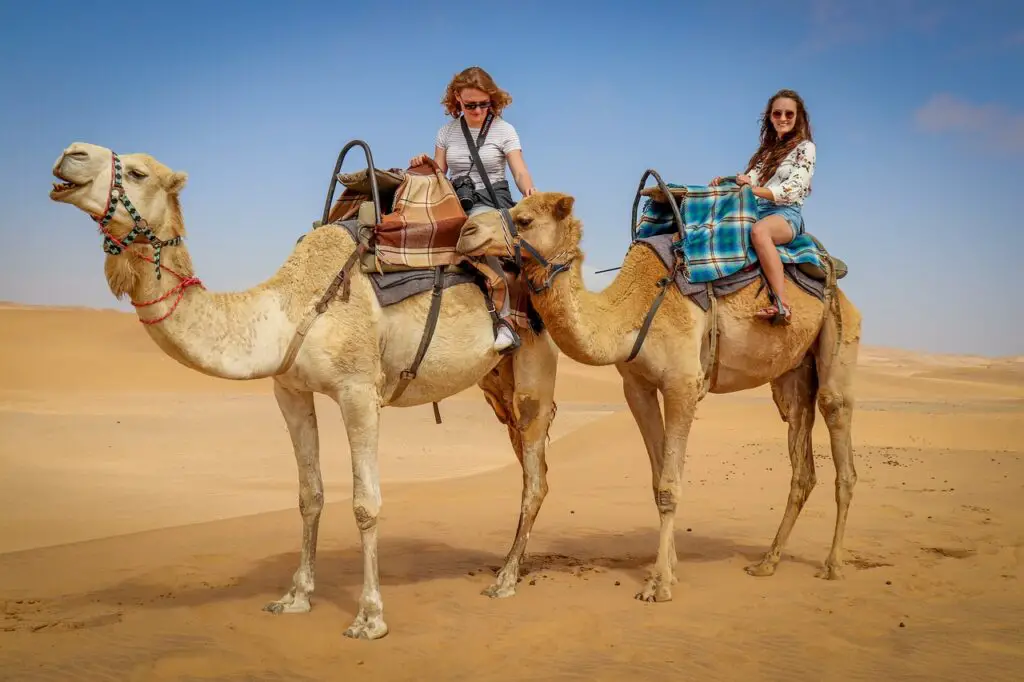
When it comes to desert survival, no animal is more iconic than the camel. According to Britannica, this remarkable creature has been the backbone of desert transportation for thousands of years, carrying travelers, traders, and supplies across vast, arid landscapes. But what makes camels so well-suited to desert life? Their adaptations go far beyond just their famous humps—which, contrary to popular belief, don’t store water but rather fat.
This stored fat provides energy when food is scarce, allowing camels to survive for weeks without eating. When they do find water, they can drink up to 40 gallons in one sitting, rehydrating their bodies at an astonishing rate. But that’s not the only trick up their sleeve. Camels have thick, bushy eyebrows and long eyelashes that protect their eyes from blinding sandstorms, as well as muscular nostrils that can completely close, preventing sand from getting in. Their wide, padded feet are specially designed to walk on soft, sinking sand without sinking, giving them an advantage over predators and other animals struggling to move across the dunes.
Their blood contains specialized red blood cells that are oval-shaped rather than round, which allows them to circulate oxygen efficiently, even when dehydrated. This unique adaptation enables camels to withstand extreme water loss—something that would be fatal to most other mammals. Camels also have an uncanny ability to regulate their body temperature, preventing them from sweating excessively and losing precious moisture. This means they can endure scorching daytime temperatures without overheating, making them one of the most perfectly adapted desert dwellers in the world.
3. Thorny Devil: The Lizard That Drinks with Its Skin
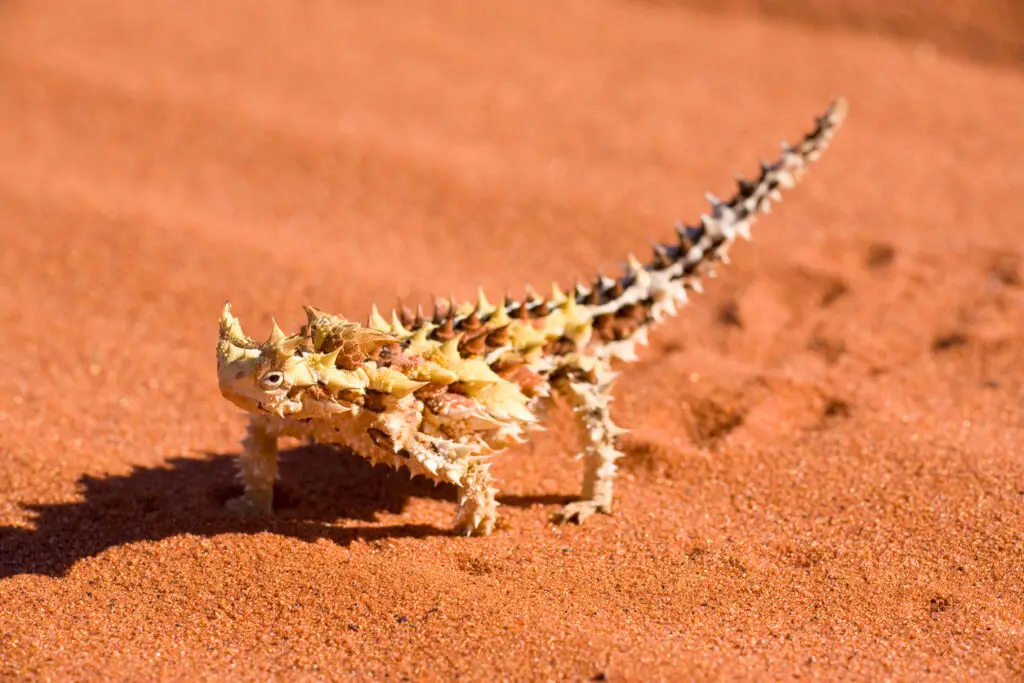
The thorny devil is one of the most bizarre and fascinating creatures found in the deserts of Australia, according to the Royal Society Publishing. With its spiky body, camouflaged skin, and slow-moving gait, this lizard might look like a tiny dragon, but its survival tactics are even more impressive than its appearance. Unlike many desert animals that actively search for water, the thorny devil has developed an astonishing ability to drink water through its skin.
Its entire body is covered in microscopic grooves that channel moisture from any surface—morning dew, damp sand, or even rainfall—directly to its mouth. This means that simply standing in a humid environment allows it to absorb water and stay hydrated. But its adaptations don’t stop there. The thorny devil’s spiky body helps break up its outline, making it nearly invisible against desert landscapes. When threatened, it can puff up its body to appear larger and even has a “false head” on its back, which confuses predators. If attacked, it simply lowers its real head and presents the false one, giving it a better chance of survival.
4. Addax: The Desert Antelope That Rarely Needs Water
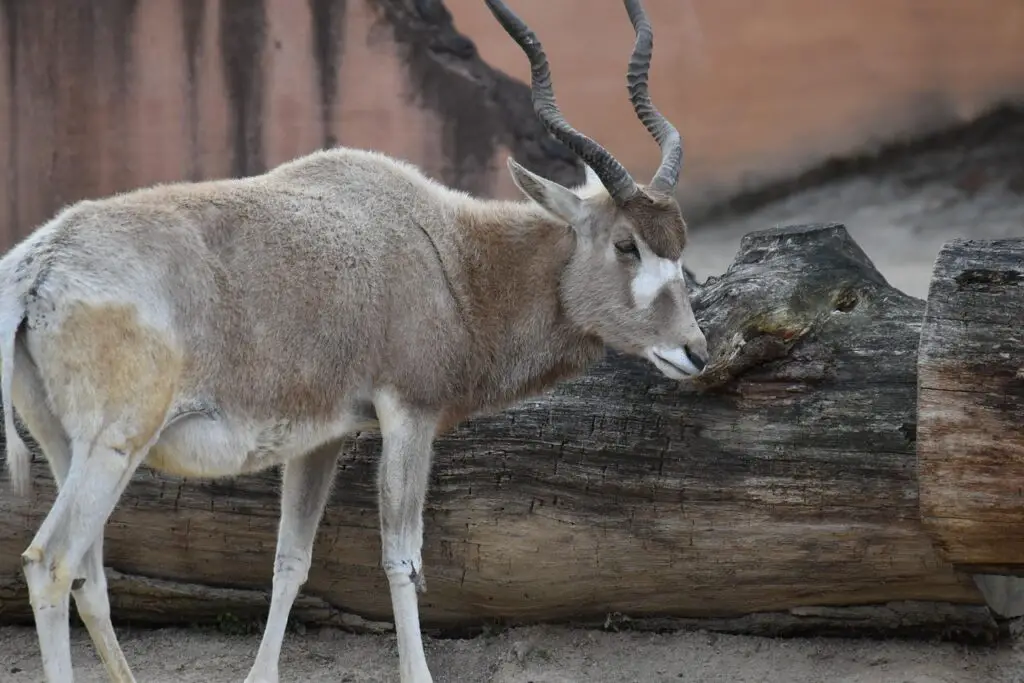
The addax, also known as the screwhorn antelope, is a rare and highly adapted creature that thrives in some of the most inhospitable desert environments, particularly in the Sahara Desert, according to Wikipedia. Unlike most antelopes that rely on frequent water sources, the addax has evolved to survive in areas where rain is almost nonexistent. It can go months without drinking water, relying entirely on the moisture it extracts from its food, which consists of tough desert grasses, shrubs, and even thorny plants. Its body has adapted to extreme dehydration, allowing it to conserve water efficiently while maintaining its health. To avoid the brutal daytime heat, the addax is mostly active at night, when the desert is much cooler, and it spends its days resting in shallow sand depressions, using the dunes as natural shade.
Another remarkable feature of the addax is its light-colored coat, which reflects sunlight and helps keep its body temperature stable even in scorching heat that can reach 120°F (49°C). However, in colder seasons, its coat changes to a darker brown to absorb more heat and stay warm during frigid desert nights. Its spiral-shaped horns, which can grow up to three feet long, help deter predators, although its main defense strategy is its ability to blend into its surroundings and avoid detection. Sadly, due to excessive hunting and habitat destruction, the addax is now critically endangered, with only a few hundred individuals left in the wild. Conservation efforts are ongoing to protect this resilient antelope, ensuring that it continues to roam the desert landscapes where it has thrived for thousands of years.
5. Namib Desert Beetle: The Insect That Harvests Water from Thin Air
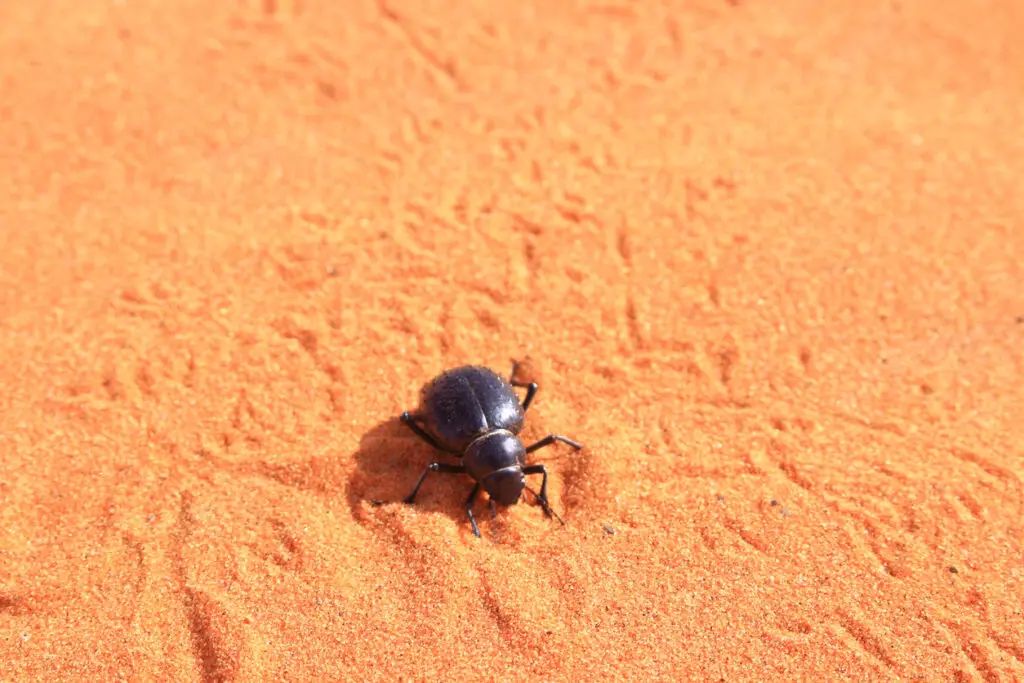
Surviving in the Namib Desert, one of the driest places on Earth, is no easy feat, but the Namib Desert beetle has developed a unique and almost unbelievable way to gather water. Since rainfall is extremely rare in this environment, this tiny beetle has evolved to harvest water directly from the air using its highly specialized exoskeleton, according to AskNature. The beetle’s back is covered in tiny bumps and ridges, which help it trap moisture from the fog that rolls in from the Atlantic Ocean. Every morning, it positions itself on sand dunes with its head facing downward, allowing condensation to form on its back and slowly trickle down to its mouth. This extraordinary ability allows the beetle to collect enough water to stay hydrated, even in an environment where liquid water is almost nonexistent.
In addition to its water-harvesting skills, the Namib Desert beetle is well-equipped to handle extreme temperatures, with a dark-colored shell that absorbs just enough heat to stay warm during cold nights, while its light-reflecting properties prevent overheating during the day. It also has strong, fast-moving legs that allow it to scurry across hot sand without getting burned, making it one of the most efficient desert survivors in the insect world. Scientists have even studied this beetle’s water-collecting adaptations to develop new technologies for gathering water in arid regions, proving that sometimes even the smallest creatures can inspire groundbreaking innovations. This beetle is a living testament to nature’s ingenuity, showing that life can persist in even the most unwelcoming places on Earth.
6. Desert Tortoise: The Slow but Resilient Survivor
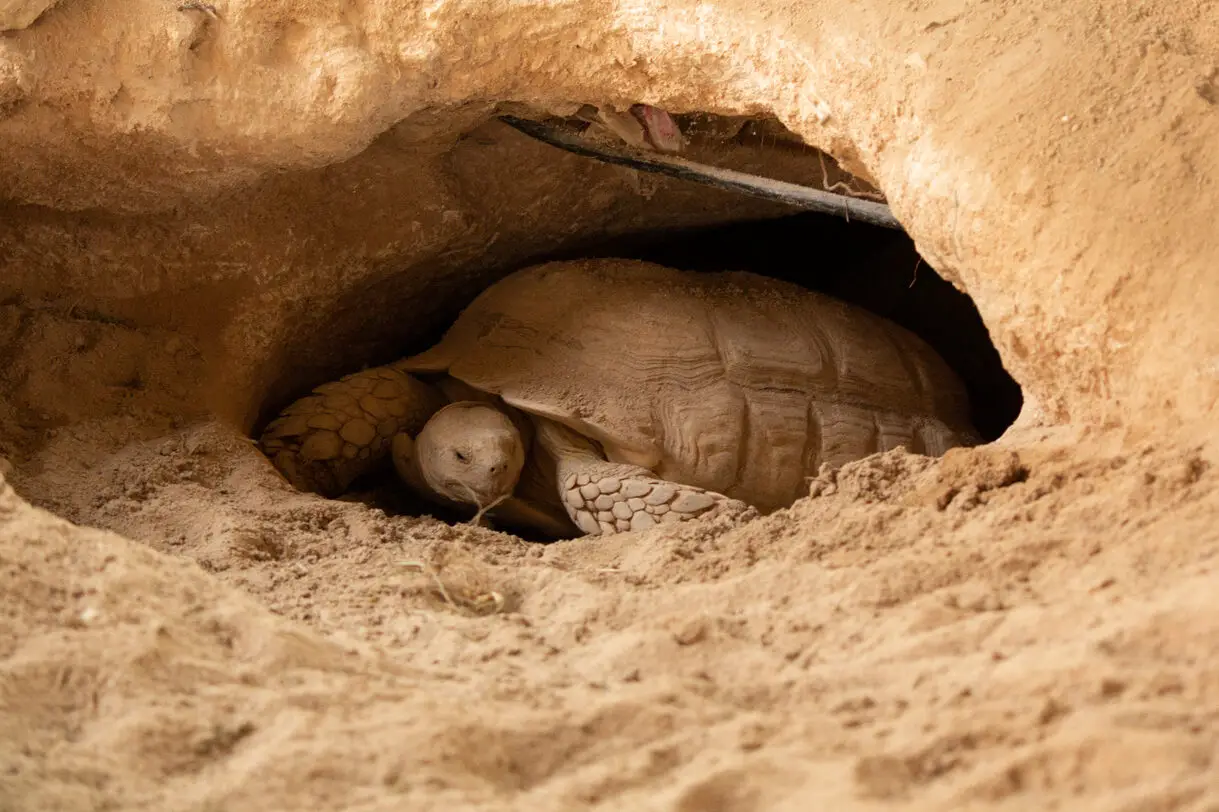
The desert tortoise may not be the fastest animal in the desert, but it is one of the most tenacious and well-adapted creatures to survive in the harsh landscapes of the southwestern United States and northern Mexico. Unlike many desert animals that rely on speed or agility to evade predators, the desert tortoise takes a different approach—it outlasts the desert’s extremes by slowing down its metabolism and spending nearly 90% of its life underground. This burrowing lifestyle helps it escape the scorching daytime heat and conserve moisture, allowing it to survive in an environment where rainfall is sporadic and temperatures can soar above 130°F (54°C).
When it does emerge, the desert tortoise has an incredible ability to store water in its bladder, allowing it to survive for months without drinking. This stored water acts as an emergency supply, and the tortoise can absorb it when needed to prevent dehydration. Its thick, domed shell helps it retain moisture and provides protection from predators like coyotes and birds of prey. However, the biggest threat to desert tortoises today isn’t natural predators—it’s habitat destruction and human interference. With urban expansion and climate change altering their environment, conservationists have been working to protect this incredibly resilient yet vulnerable species, ensuring that it continues to roam the desert for generations to come.
Click here for more stories like this
7. Kangaroo Rat: The Rodent That Never Needs to Drink Water
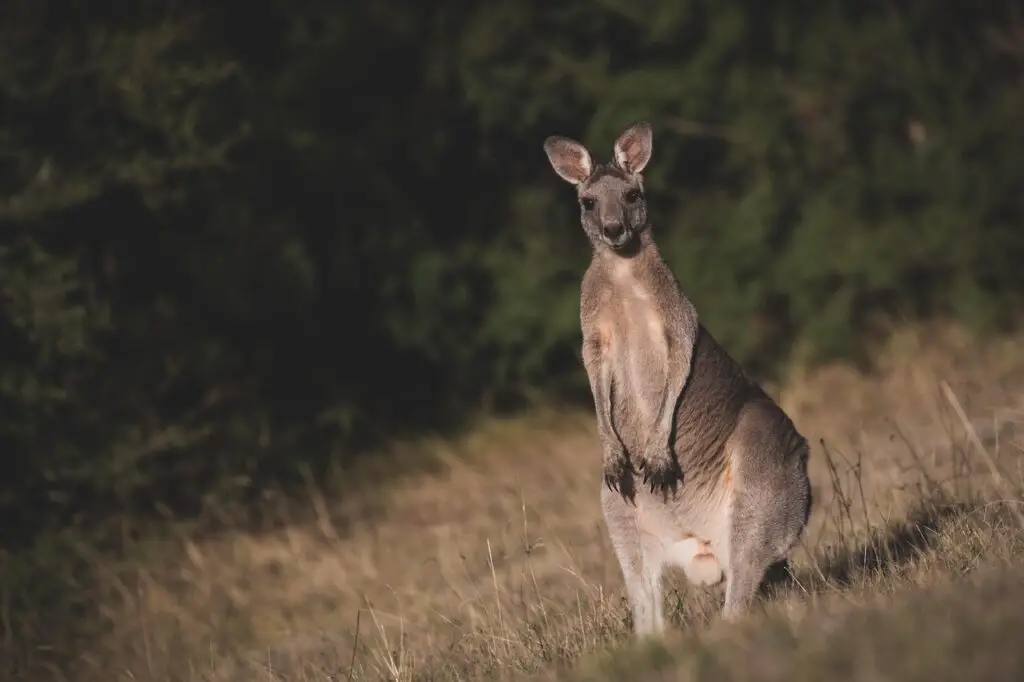
The kangaroo rat is one of the most remarkable mammals in the desert, and it has a superpower that seems almost impossible—it never drinks water. Instead of seeking out water sources like most animals, this tiny rodent gets all the moisture it needs from the seeds it eats, making it one of the most water-efficient creatures in the world. Found in the deserts of North America, the kangaroo rat has evolved to extract every drop of moisture from its food, and its kidneys are so efficient that it produces almost no liquid waste. This allows it to survive in some of the driest regions on Earth, where rainfall is rare and temperatures can be brutally high.
In addition to its impressive water conservation skills, the kangaroo rat is an expert at avoiding predators. With its long, powerful hind legs, it can leap up to nine feet in a single bound, making it extremely difficult for predators like owls, snakes, and foxes to catch. It is also primarily nocturnal, coming out only at night when the desert is cooler, reducing water loss from sweating or panting. To stay hidden, it burrows deep underground during the day, creating an environment that remains humid enough to prevent dehydration. Despite its small size, this rodent is one of the most perfectly adapted desert dwellers, proving that sometimes the most unassuming creatures have the most astonishing survival skills.
8. Sand Cat: The Mysterious Feline That Masters the Desert
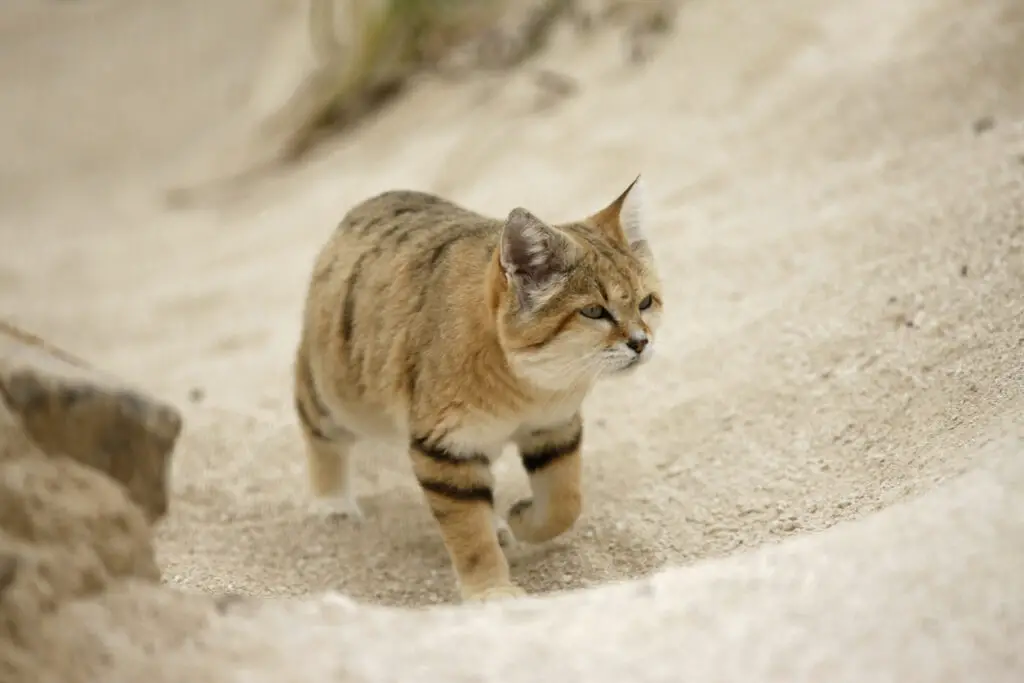
At first glance, the sand cat looks like a regular house cat, but this wild feline is one of the most elusive and well-adapted predators of the desert. Found in North Africa, the Middle East, and parts of Central Asia, the sand cat is built to withstand the extreme heat and cold of the desert with adaptations that make it a formidable hunter. Unlike other wild cats, it has thick fur covering its paws, acting like natural snowshoes to prevent burns from the scorching sand and to move silently while stalking prey. Its dense, sandy-colored coat also provides insulation against the desert’s temperature extremes, keeping it warm on freezing nights and cool under the intense sun.
This cat is a master of stealth, using its low-profile movements and camouflaged fur to stay hidden from both predators and prey. It primarily hunts at night, using its exceptional hearing to detect the faint sounds of rodents, birds, and even venomous snakes beneath the sand. Unlike many desert animals that rely on speed, the sand cat’s strategy is patience—it will crouch, wait, and then strike with incredible precision. Despite its ability to survive in some of the harshest environments, the sand cat remains one of the least-studied wild cats, as its secretive nature makes it difficult for researchers to track. This small but fearless predator proves that the desert is home to some of the most mysterious and perfectly adapted creatures in the world.
9. Deathstalker Scorpion: The Deadly Survivor of the Dunes
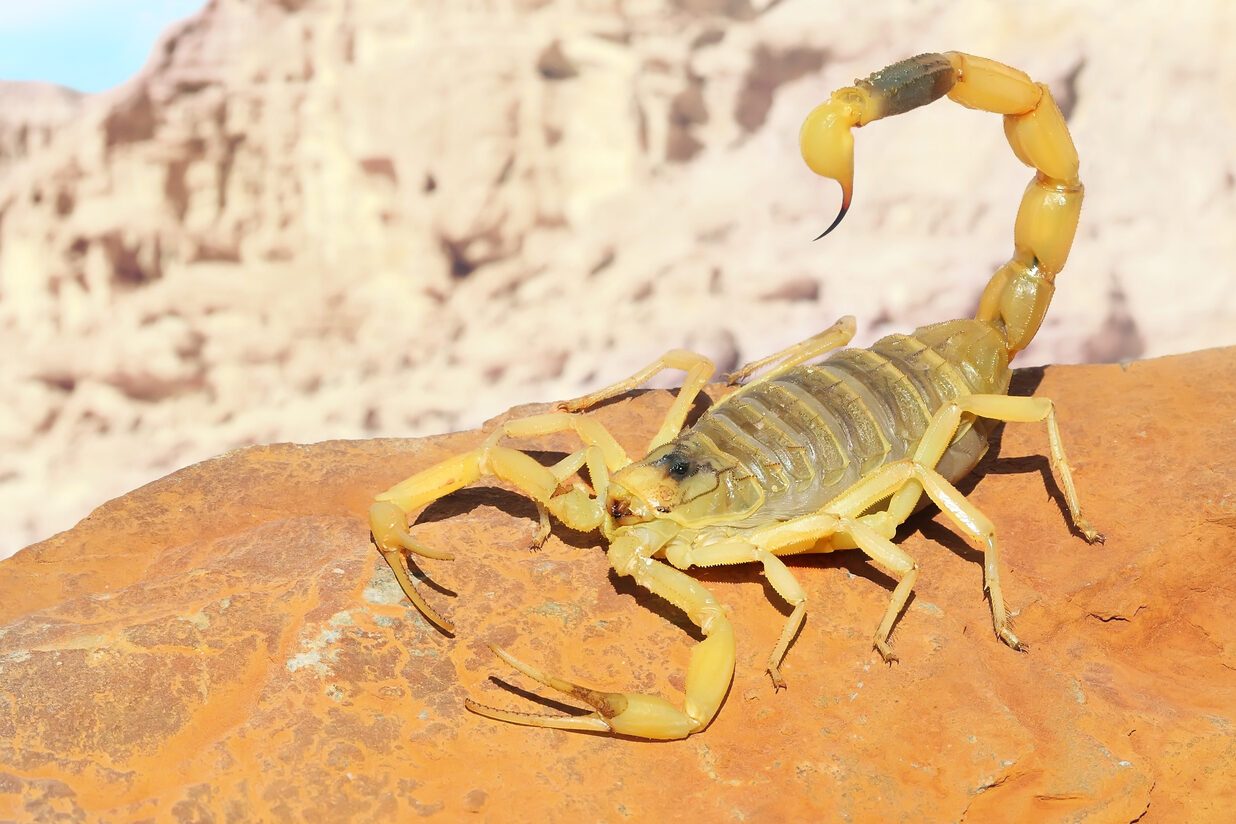
The deathstalker scorpion is one of the most feared creatures of the desert, and for good reason—its venom is one of the most potent in the animal kingdom. Found in North Africa and the Middle East, this scorpion thrives in extreme desert environments where few other animals can survive. Its yellowish, translucent exoskeleton provides excellent camouflage against the sand, making it almost invisible to predators and prey alike. Unlike mammals and birds, which need water frequently, the deathstalker can survive for months without drinking, relying on the fluids it extracts from the insects, spiders, and small lizards it hunts.
Despite its fearsome reputation, the deathstalker’s venom has also proven to be a scientific marvel. Researchers have discovered that its toxins contain compounds that may help treat brain tumors, diabetes, and other diseases, making this tiny predator not only a deadly hunter but also a potential life-saving creature. While its venom is highly toxic, fatal stings in humans are rare, as medical treatment is available in most areas where it is found. However, its presence serves as a reminder of just how powerful desert creatures can be, proving that even in the most inhospitable places, evolution has created some of the most efficient and fascinating survivors.
10. Jerboa: The Spring-Loaded Acrobat of the Desert
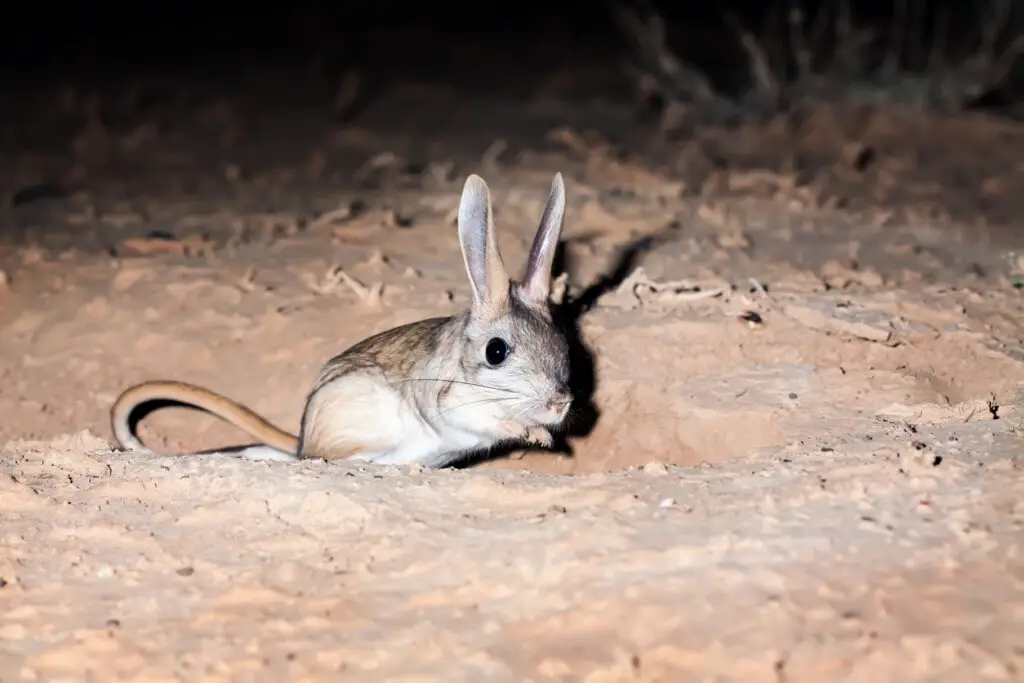
The jerboa is a tiny, springy rodent that looks like a mix between a mouse and a kangaroo, and it is one of the most entertaining desert animals to watch. Found in the deserts of North Africa, Asia, and the Middle East, this small creature has evolved an extraordinary way of escaping predators—it bounces away like a miniature kangaroo. Its powerful hind legs allow it to leap up to 10 feet in a single bound, helping it avoid threats from owls, foxes, and snakes. Unlike most rodents, jerboas don’t dig deep burrows to escape the heat; instead, they rely on speed, agility, and their ability to hide quickly in the sand.
One of the most fascinating things about the jerboa is its ability to survive without drinking water. Like the kangaroo rat, it gets all of its hydration from the seeds and plants it eats, meaning it can go its entire life without ever taking a sip of water. Its long, silky tail, which can be longer than its body, helps it balance while jumping and serves as a rudder for quick direction changes. With its large eyes and giant ears, the jerboa has excellent vision and hearing, allowing it to detect predators even in complete darkness. Its adorable yet highly efficient survival strategies make it one of the most extraordinary desert rodents in the world.
11. Meerkat: The Social Desert Dwellers
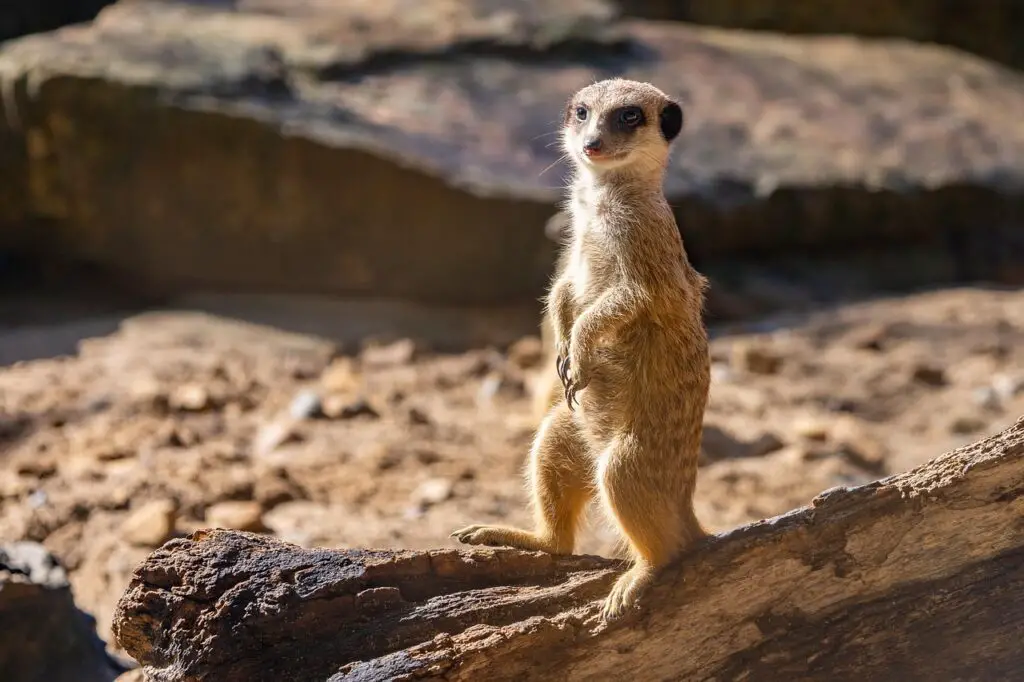
Meerkats are some of the most charismatic animals in the desert, famous for their upright stance and tight-knit family groups. These small mammals, native to the arid regions of southern Africa, rely on teamwork and strong social bonds to survive in an otherwise inhospitable landscape. They live in large underground burrows, which provide shelter from the sun and protection from predators like hawks and jackals. Their cooperative nature is one of their biggest strengths—while some members of the group forage for food, others stand guard, keeping watch for danger.
Despite the harsh conditions, meerkats have adapted to thrive with minimal water. Their diet consists mainly of insects, small reptiles, and plants, which provide enough moisture to keep them hydrated. They are also immune to certain scorpion venoms, allowing them to feast on these dangerous arachnids without fear. With their intelligence, teamwork, and remarkable survival skills, meerkats have truly mastered the art of desert living.
12. Ostrich: The Desert’s Speed Demon and Ultimate Survivor
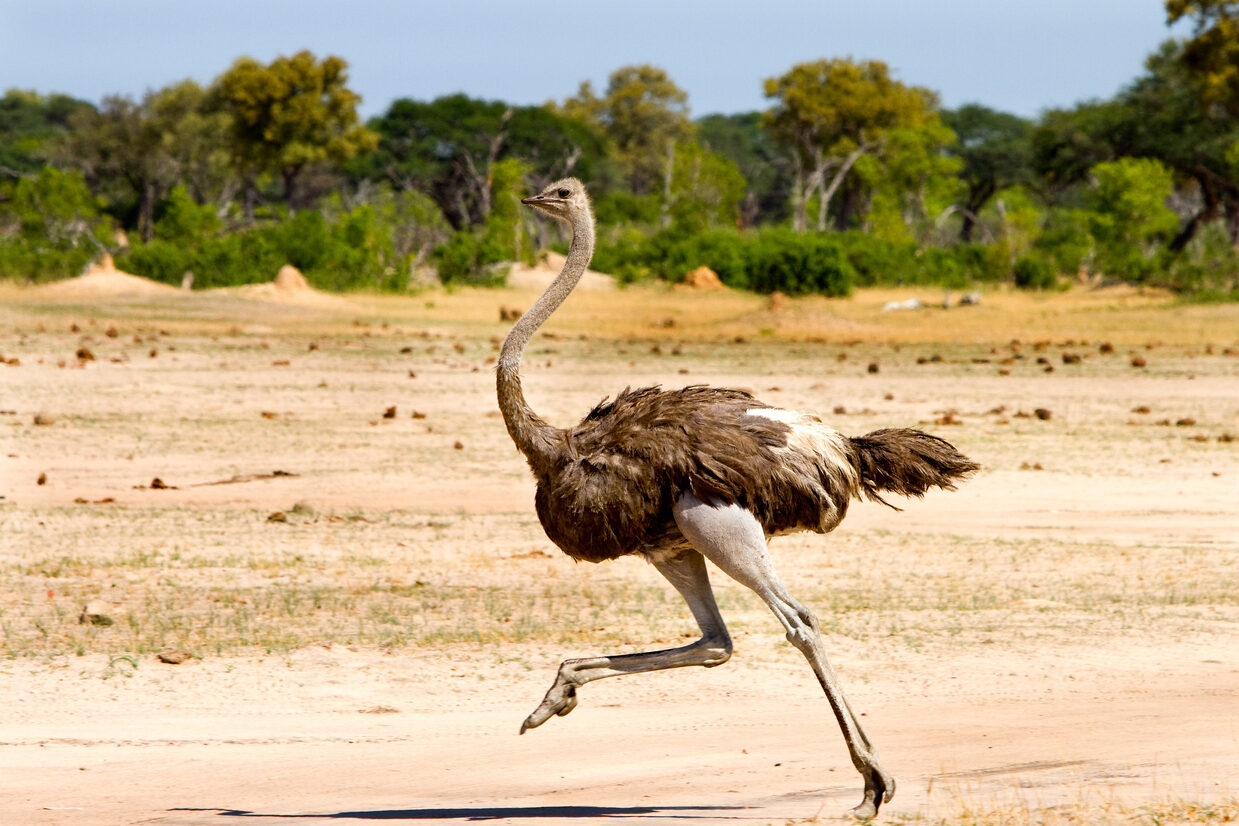
The ostrich is a true desert powerhouse, perfectly adapted to withstand extreme heat, arid conditions, and relentless predators. Unlike many desert animals that rely on burrowing or nocturnal activity to escape the scorching sun, the ostrich remains active during the day, using its unique biological features to regulate its temperature. Its large body size helps retain moisture, while its specialized respiratory system allows it to cool down efficiently without excessive water loss. Instead of panting, like most birds, ostriches use an advanced air circulation system to dissipate heat. Their soft yet insulating feathers serve a dual purpose, keeping them cool during the brutal daytime temperatures and warm when the desert turns freezing at night. Their long, bare legs also play a crucial role in desert survival, reducing heat absorption and conserving water, while their thick, scaly skin prevents dehydration in the dry, relentless climate.
Beyond their ability to endure harsh conditions, ostriches are built for speed, strength, and self-sufficiency. As the fastest bird on land, an ostrich can sprint at speeds of up to 60 km/h (37 mph) and maintain a steady pace of 50 km/h (31 mph) over long distances, allowing it to outrun nearly any predator, including lions, hyenas, and cheetahs. But if forced to fight, an ostrich is far from defenseless—its powerful legs deliver bone-crushing kicks that can kill a predator with a single blow, while its sharp claws act as lethal weapons. When it comes to food, ostriches are highly adaptable, consuming everything from desert plants and seeds to insects and small vertebrates, extracting all the moisture they need from their diet. Even their eggs, the largest of any bird, are built for survival, with thick, durable shells that protect developing chicks from predators and the harsh desert environment. With unmatched endurance, incredible self-defense mechanisms, and an ability to thrive without direct water sources, the ostrich is not just a desert survivor—it is a master of the unforgiving wilderness.


